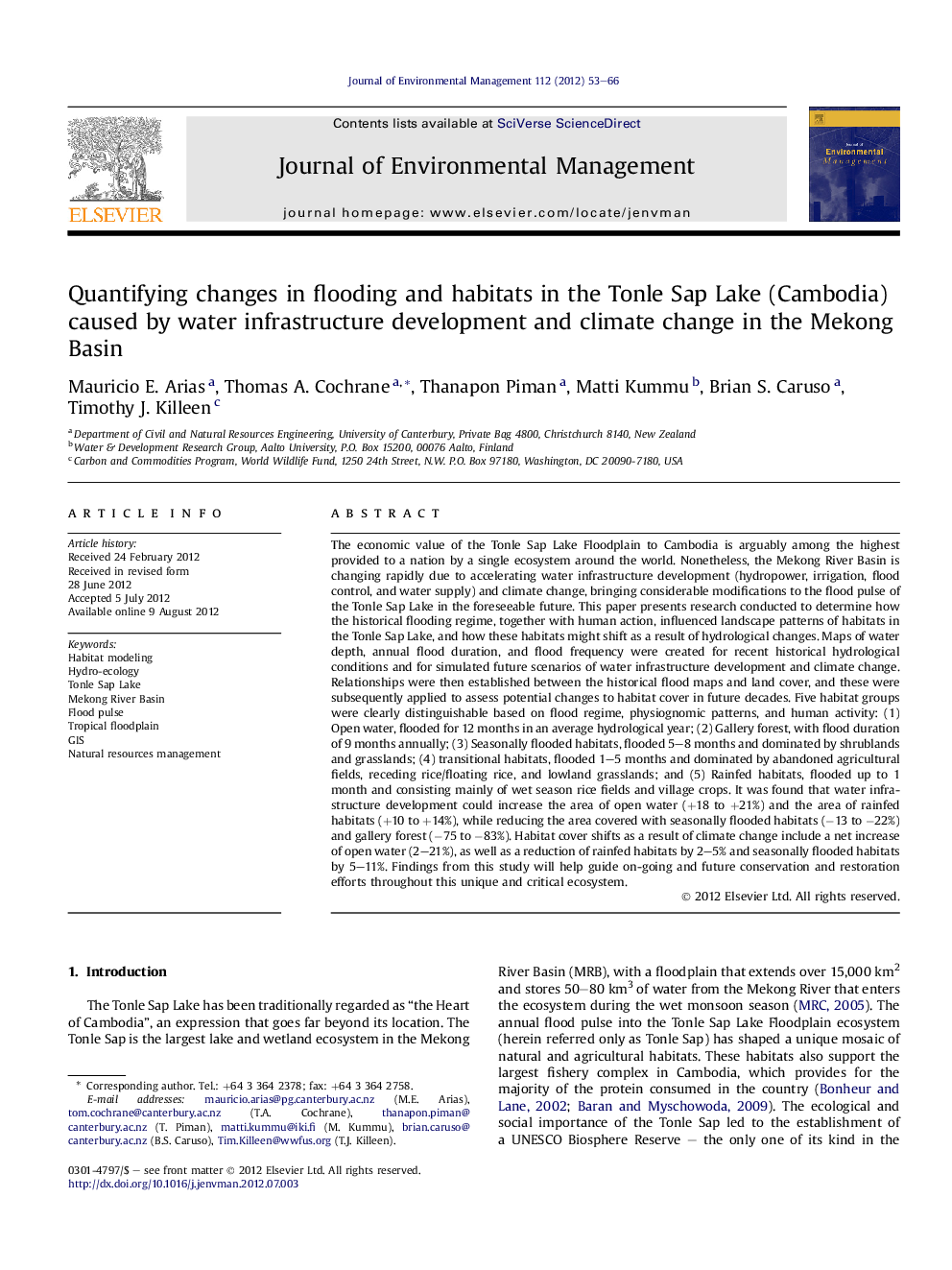| کد مقاله | کد نشریه | سال انتشار | مقاله انگلیسی | نسخه تمام متن |
|---|---|---|---|---|
| 1056410 | 1485300 | 2012 | 14 صفحه PDF | دانلود رایگان |

The economic value of the Tonle Sap Lake Floodplain to Cambodia is arguably among the highest provided to a nation by a single ecosystem around the world. Nonetheless, the Mekong River Basin is changing rapidly due to accelerating water infrastructure development (hydropower, irrigation, flood control, and water supply) and climate change, bringing considerable modifications to the flood pulse of the Tonle Sap Lake in the foreseeable future. This paper presents research conducted to determine how the historical flooding regime, together with human action, influenced landscape patterns of habitats in the Tonle Sap Lake, and how these habitats might shift as a result of hydrological changes. Maps of water depth, annual flood duration, and flood frequency were created for recent historical hydrological conditions and for simulated future scenarios of water infrastructure development and climate change. Relationships were then established between the historical flood maps and land cover, and these were subsequently applied to assess potential changes to habitat cover in future decades. Five habitat groups were clearly distinguishable based on flood regime, physiognomic patterns, and human activity: (1) Open water, flooded for 12 months in an average hydrological year; (2) Gallery forest, with flood duration of 9 months annually; (3) Seasonally flooded habitats, flooded 5–8 months and dominated by shrublands and grasslands; (4) transitional habitats, flooded 1–5 months and dominated by abandoned agricultural fields, receding rice/floating rice, and lowland grasslands; and (5) Rainfed habitats, flooded up to 1 month and consisting mainly of wet season rice fields and village crops. It was found that water infrastructure development could increase the area of open water (+18 to +21%) and the area of rainfed habitats (+10 to +14%), while reducing the area covered with seasonally flooded habitats (−13 to −22%) and gallery forest (−75 to −83%). Habitat cover shifts as a result of climate change include a net increase of open water (2–21%), as well as a reduction of rainfed habitats by 2–5% and seasonally flooded habitats by 5–11%. Findings from this study will help guide on-going and future conservation and restoration efforts throughout this unique and critical ecosystem.
► We quantified spatial and temporal changes using geographical and hydrologic data.
► We found good correlation between flood duration and habitat cover.
► We quantified changes on habitat cover caused by alterations in the Mekong Basin.
► Conservation efforts must consider flooding seasonality and low agricultural use.
Journal: Journal of Environmental Management - Volume 112, 15 December 2012, Pages 53–66